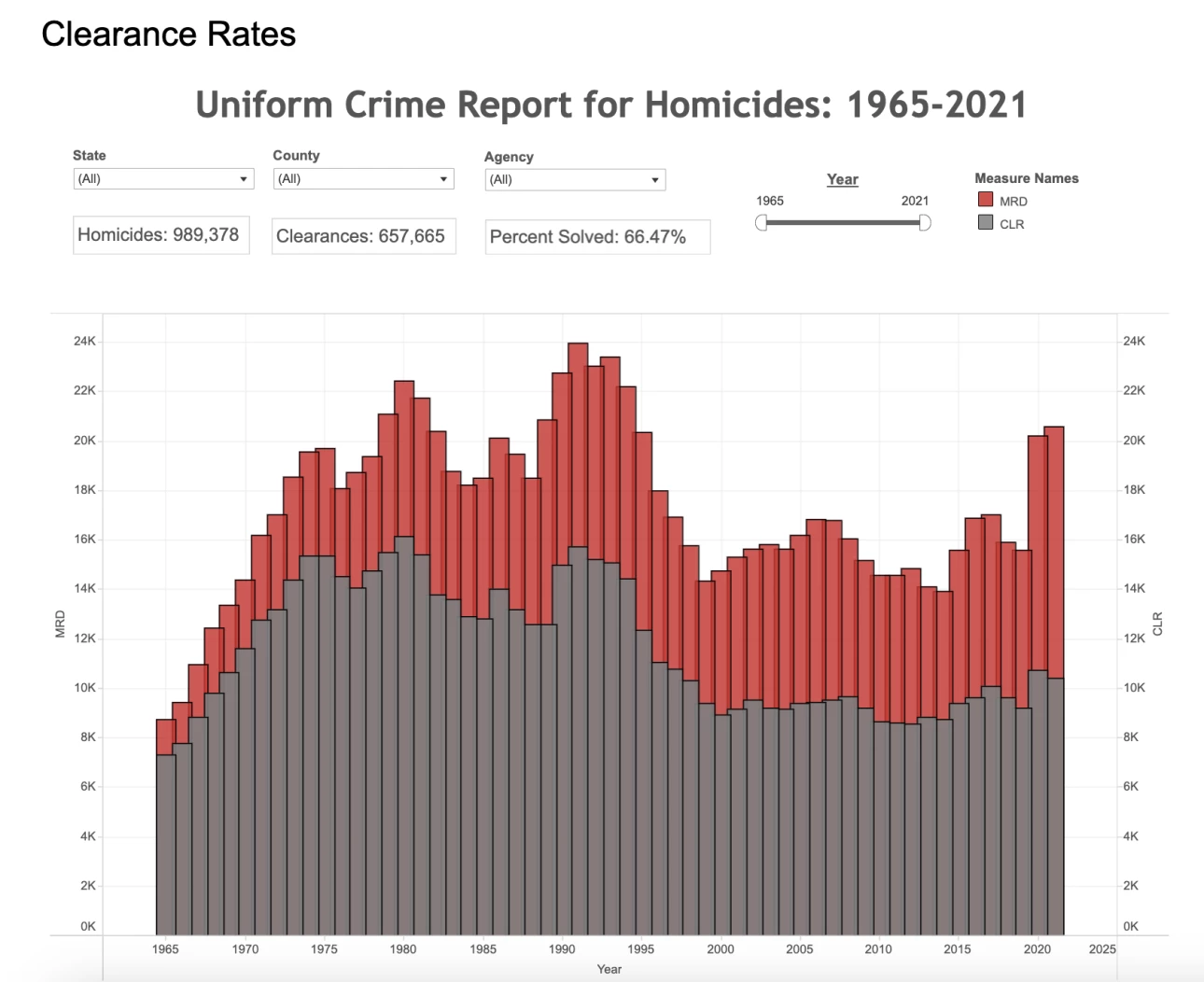The number of unsolved murders, and the rate of the rise of unsolved murders, isn’t really getting very much attention.
The murder rate went through the roof and the clearance through the floor in the wake of the George Floyd riots, because everyone wanted to help the blacks by defunding the police. Everyone felt really proud of themselves when they went out and called for the police to be defunded.
Now, because there are no police, blacks just kill each other with no consequences.
Now, society doesn’t care, because after all – it’s just a bunch of niggers, right?
The clearance rate for homicides in the United States in 2020 dipped to around 50%, continuing a downward trend that has plagued the country for the last 40 years. America now ranks last among Western nations for murder clearance rates.
The rate at which murders are solved decreased from 71% in 1980 to an all-time low of almost 50% in 2020, making America the first developed nation where most homicides go unsolved, according to Thomas Hargrove, founder of the Murder Accountability Project.
Hargrove said there are countries in Europe solving more than 70% of their homicides, “rates that we haven’t seen for a long time in this country.”
“Frankly, we’re last among developed nations,” Hargrove told the Washington Examiner. “And we’re a bit of sore thumb. We stick out. We are underperforming compared to what most Western democracies are performing.”
Both the Murder Accountability Project and the Marshall Project, who separately analyzed FBI data, determined that roughly half the country’s killings remained unsolved for 2020 and 2021, both years that had an unprecedented rise in homicides.
Clearing a homicide can come in several ways, according to the FBI’s Uniform Crime Reporting. Law enforcement agencies can clear or close a murder case by arrest or through “exceptional means.”
To clear a homicide by arrest, a case must include at least one person arrested, charged with the offense, and turned over to the court for prosecution. Sometimes, circumstances occur that prevent police from arresting or charging an offender. To close a case through exceptional means, an agency must identify the offender, gather evidence to support an arrest or charge, and pinpoint the offender’s exact location.
In 2019, 45.5% of violent crimes — which can include homicide, rape, sexual assault, robbery, and assault — and 17.2% of property crimes were cleared, per the FBI. When clearing homicide offenses alone, 61.4% of cases were closed in 2019.
Violent crimes slightly declined across 35 cities known for high crime rates in 2022, per a report from the Council on Criminal Justice. The amount of less-deadly infractions, such as vehicle theft and property crimes, spiked, with signs showing 2023 might look similar.
Hargrove said the drop in 2020 murder clearances is primarily associated with the reaction from the African American community to the murder of George Floyd by police in Minneapolis, as well as decades of mistreatment or injustice.
“Police were regarded to be illegitimate,” he said. “That sense that ‘These are not our friends, they are not enforcing the law, they’re actually killing our people,’ that kind of message has a deleterious effect upon witness cooperation and participation.”
Homicides of young black and Latino men are the most likely to be left unsolved compared to other demographics, David Bjerk, an economics professor at Claremont McKenna College, told the Guardian. His study, published in 2022, determined that the clearance rate for minority men was 15 to 30 percentage points lower than any other racial demographic.
The solution, Hargrove said, is to properly fund, not “defund,” the police, a hot-button topic that gained traction after Floyd’s death.
That’s racist.
We’re just going to let the blacks die.
It’s the only anti-racist policy.
 Daily Stormer The Most Censored Publication in History
Daily Stormer The Most Censored Publication in History



